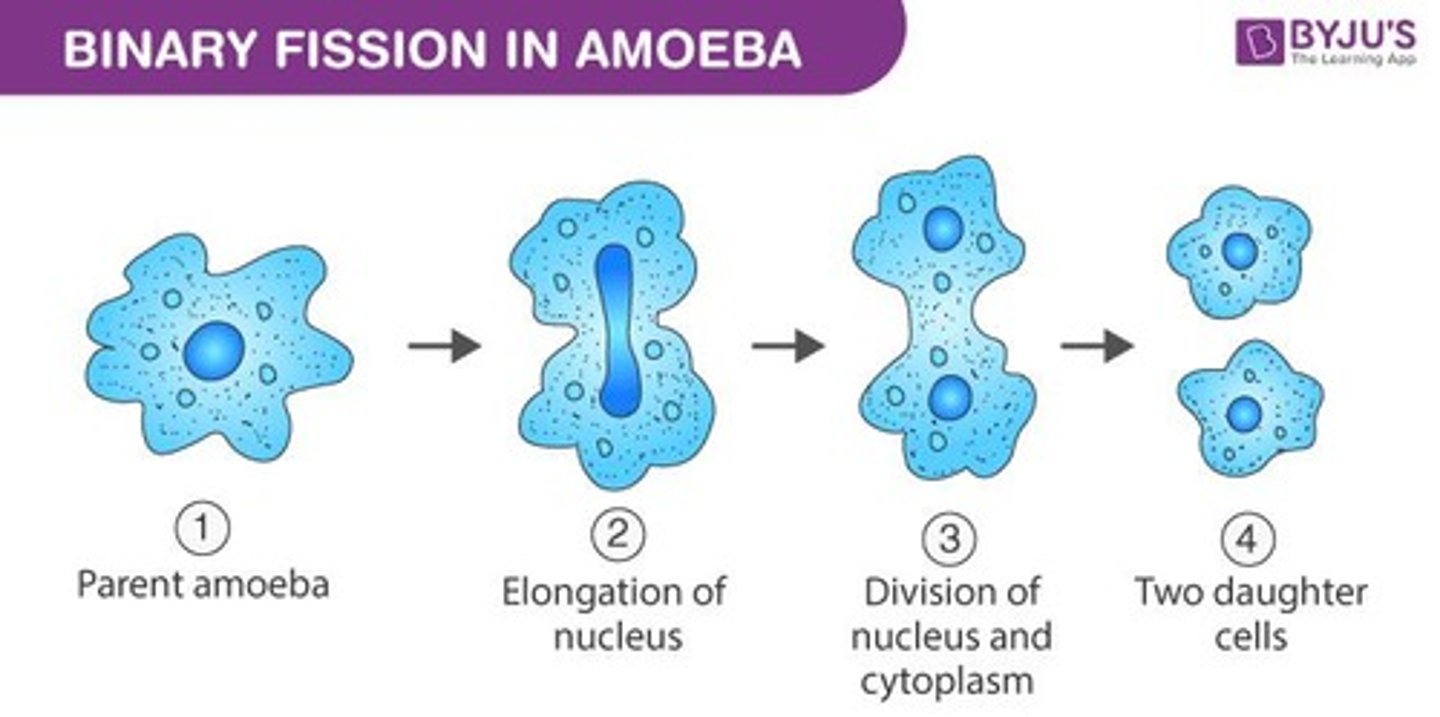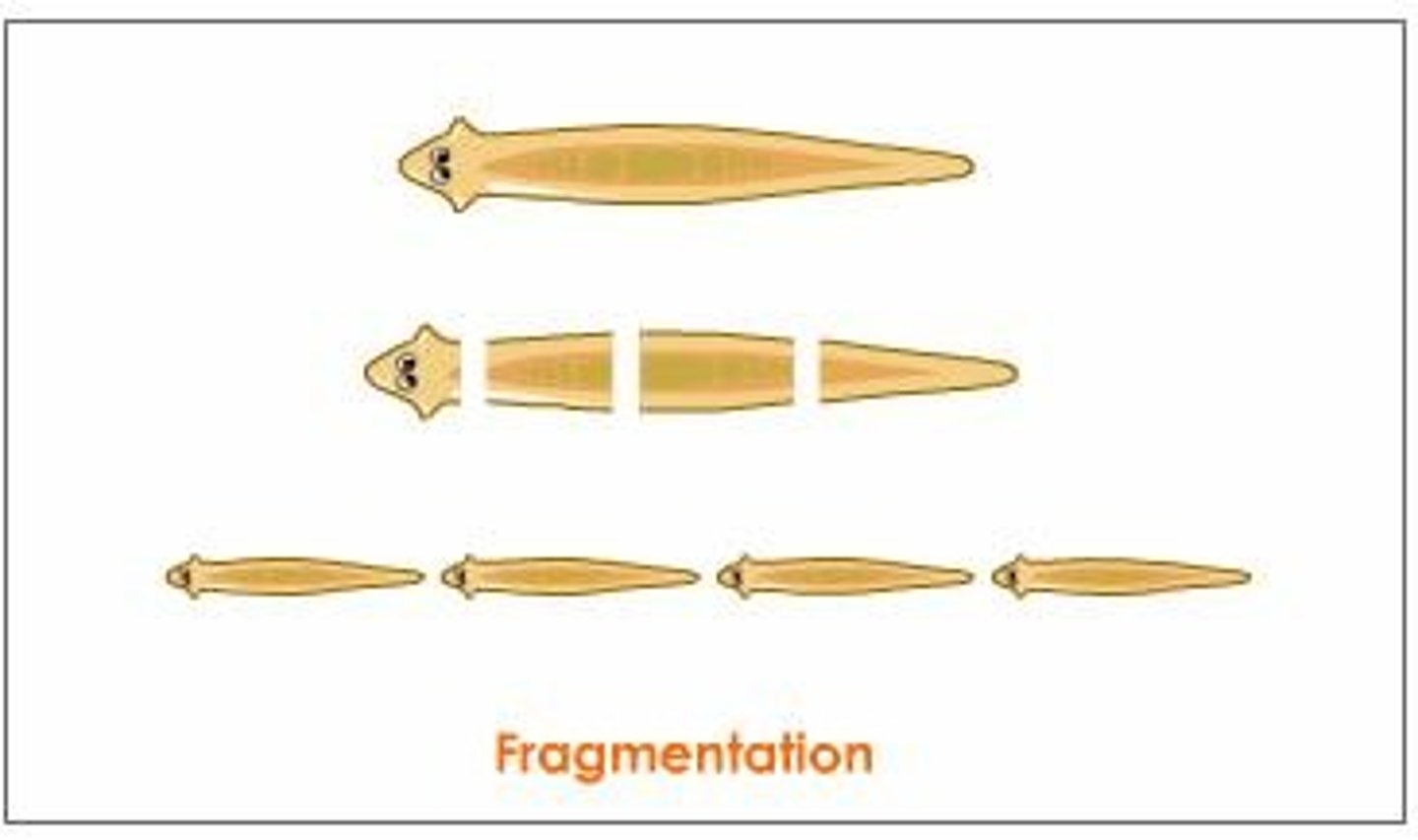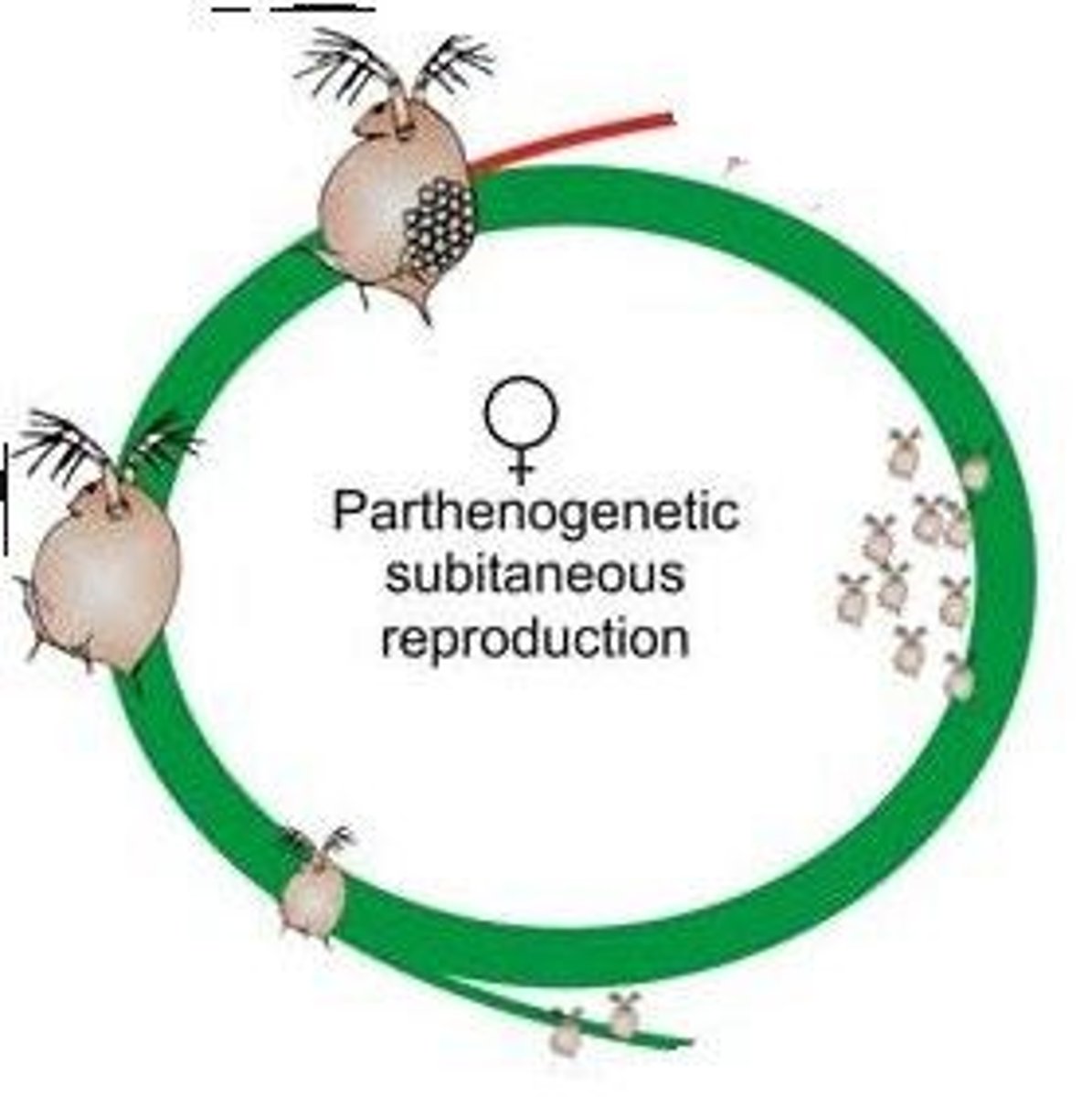Chapter 43: Animal Reproduction
1/34
There's no tags or description
Looks like no tags are added yet.
Name | Mastery | Learn | Test | Matching | Spaced |
|---|
No study sessions yet.
35 Terms
What are advantages of asexual reproduction?
one individual can produce many clones quickly, favored in stable/predictable environments, used for colonizing new habitats without needing mate
What are the advantages of sexual reproduction?
increases genetic diversity, favored in unstable/unpredictable environments, variation improves chances of survival
What is binary fission?
organism splits into two equally sized organisms; some invertebrates like corals and anemones

What is budding?
adult produces outgrowth that separates and grows into new organisms; some invertebrates like hydra

What is fragmentation?
part of adult breaks off and regenerates into new organism; sea stars, flatworms, poriferans (sponges)

What is parthenogenesis?
in females, two eggs fuse without fertilization to produce offspring; invertebrates like water fleas, bees, daphnia; vertebrates like reptiles, amphibians, fish

How is sex determined in mammals?
XX - female
XY - male (Y)
How is sex determined in birds?
ZZ = male
ZW = female (W)
also in fish, insects, reptiles
What is temperature-dependent sex determination (TSD)?
sex determined by environmental temperature
Turtles—cooler = male, warmer = female
Alligators/crocodiles—warmer = male, cooler = female
What is sex change in animals?
some animals change sex during life
protogyny - female first
protandry - male first
in fish and oysters
What is haplodiploid sex determination?
haploid = male
diploid = female
in hymenoptera (bees, ants, wasps)
What does monoecious mean in sexual reproduction?
one individual has both male and female reproductive parts and can self-fertilize or mate with others; worms, slugs, snails
What is external fertilization?
females and males release eggs and sperm into water at same time to fertilize externally, mostly in aquatic environments; low survival rate
What is broadcast spawning?
all males and females release gametes simultaneously, triggered by time of year/day, leading to high genetic diversity
What is courtship spawning?
one male and one female release gametes together after courtship behavior; produces many offspring but low survival rate
What is internal fertilization?
male sperm is deposited inside female to fertilize eggs, protecting embryo from predation and drying out
What are the advantages of internal fertilization?
produces fewer offspring but higher survival rate
What is viviparous reproduction?
embryo attaches to mother's oviduct and obtains nutrients directly from her; live birth; most mammals
What is oviparous reproduction?
fertilized eggs are laid outside mother's body; embryos get nutrition from egg yolk; fish, reptiles, birds
What is ovoviviparous reproduction?
fertilized eggs develop inside mother, hatch in utero, born alive; nutrition from egg yolk; sharks, snakes, lizards
What unusual behavior occurs in some ovoviviparous sharks?
young obtain nutrition by cannibalizing siblings inside the mother
What is spermatogenesis?
production of sperm
What are spermatogonia?
cells in the testes that undergo mitosis and produce primary spermatocytes
What happens when a spermatogonium divides by mitosis?
produces diploid cells: spermatogonium, primary spermatocyte (produces sperm via meiosis)
What happens to primary spermatocytes during spermatogenesis?
undergoes meiosis I to produce two secondary spermatocytes
What happens after meiosis II in spermatogenesis?
each secondary spermatocyte divides into two spermatids, totaling four spermatids
How do spermatids become sperm?
differentiate into mature sperm cells in lumen of seminiferous tubules
When do spermatogonia become active?
inactive at birth, activated during puberty by hormones from anterior pituitary
What is oogenesis?
Egg production
What are oogonia?
cells in ovaries that divide by mitosis to form 2 primary oocytes
What happens to primary oocytes before birth?
begin meiosis but stop at Prophase I; females are born with all eggs arrested at this stage
What triggers primary oocytes to resume meiosis?
gonadotropic hormone from anterior pituitary and follicle-stimulating hormone during puberty
What results from completion of meiosis I in oogenesis?
two haploid cells: larger secondary oocyte arrested in metaphase II, smaller polar body
When is the secondary oocyte released in oogenesis?
during ovulation
What happens if the secondary oocyte is fertilized?
completes meiosis II, producing zygote and second polar body that degenerates